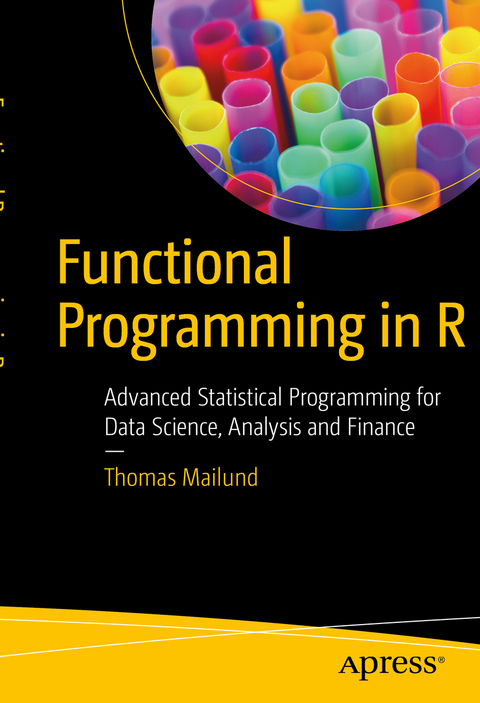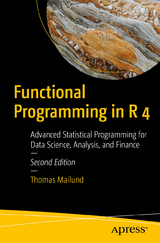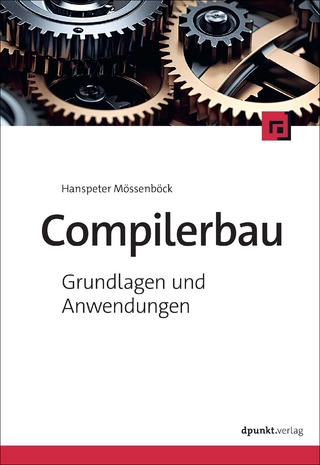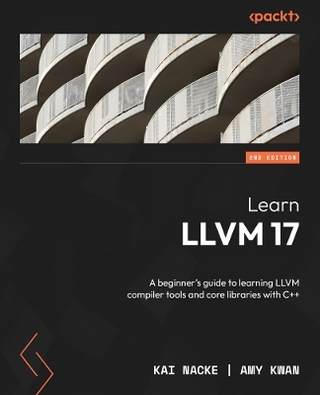
Functional Programming in R
Advanced Statistical Programming for Data Science, Analysis and Finance
Seiten
2017
|
1st ed.
Apress (Verlag)
978-1-4842-2745-9 (ISBN)
Apress (Verlag)
978-1-4842-2745-9 (ISBN)
Zu diesem Artikel existiert eine Nachauflage
Master functions and discover how to write functional programs in R. In this concise book, you'll make your functions pure by avoiding side-effects; you’ll write functions that manipulate other functions, and you’ll construct complex functions using simpler functions as building blocks.
In Functional Programming in R, you’ll see how we can replace loops, which can have side-effects, with recursive functions that can more easily avoid them. In addition, the book covers why you shouldn't use recursion when loops are more efficient and how you can get the best of both worlds.
Functional programming is a style of programming, like object-oriented programming, but one that focuses on data transformations and calculations rather than objects and state. Where in object-oriented programming you model your programs by describing which states an object can be in and how methods will reveal or modify that state, in functional programming you model programs by describing how functions translate input data to output data. Functions themselves are considered to be data you can manipulate and much of the strength of functional programming comes from manipulating functions; that is, building more complex functions by combining simpler functions.
What You'll Learn
Write functions in R including infix operators and replacement functions
Create higher order functions
Pass functions to other functions and start using functions as data you can manipulate
Use Filer, Map and Reduce functions to express the intent behind code clearly and safely
Build new functions from existing functions without necessarily writing any new functions, using point-free programming
Create functions that carry data along with them
Who This Book Is For
Those with at least some experience with programming in R.
In Functional Programming in R, you’ll see how we can replace loops, which can have side-effects, with recursive functions that can more easily avoid them. In addition, the book covers why you shouldn't use recursion when loops are more efficient and how you can get the best of both worlds.
Functional programming is a style of programming, like object-oriented programming, but one that focuses on data transformations and calculations rather than objects and state. Where in object-oriented programming you model your programs by describing which states an object can be in and how methods will reveal or modify that state, in functional programming you model programs by describing how functions translate input data to output data. Functions themselves are considered to be data you can manipulate and much of the strength of functional programming comes from manipulating functions; that is, building more complex functions by combining simpler functions.
What You'll Learn
Write functions in R including infix operators and replacement functions
Create higher order functions
Pass functions to other functions and start using functions as data you can manipulate
Use Filer, Map and Reduce functions to express the intent behind code clearly and safely
Build new functions from existing functions without necessarily writing any new functions, using point-free programming
Create functions that carry data along with them
Who This Book Is For
Those with at least some experience with programming in R.
Thomas Mailund is an associate professor in bioinformatics at Aarhus University, Denmark. He has a background in math and computer science. For the last decade, his main focus has been on genetics and evolutionary studies, particularly comparative genomics, speciation, and gene flow between emerging species. He has published Beginning Data Science in R with Apress as well as other books out there.
1. Functions in R2. Pure Functional Programming3. Scope and Closures4. Higher-order Functions5. Filer, Map, and Reduce6. Point-free Programming Afterword
| Erscheinungsdatum | 14.04.2017 |
|---|---|
| Zusatzinfo | 1 Illustrations, color; 6 Illustrations, black and white; XV, 104 p. 7 illus., 1 illus. in color. |
| Verlagsort | Berkley |
| Sprache | englisch |
| Maße | 155 x 235 mm |
| Gewicht | 454 g |
| Themenwelt | Mathematik / Informatik ► Informatik ► Programmiersprachen / -werkzeuge |
| Mathematik / Informatik ► Informatik ► Software Entwicklung | |
| Informatik ► Theorie / Studium ► Compilerbau | |
| ISBN-10 | 1-4842-2745-X / 148422745X |
| ISBN-13 | 978-1-4842-2745-9 / 9781484227459 |
| Zustand | Neuware |
| Informationen gemäß Produktsicherheitsverordnung (GPSR) | |
| Haben Sie eine Frage zum Produkt? |
Mehr entdecken
aus dem Bereich
aus dem Bereich
a beginner's guide to learning llvm compiler tools and core …
Buch | Softcover (2024)
Packt Publishing Limited (Verlag)
49,85 €



